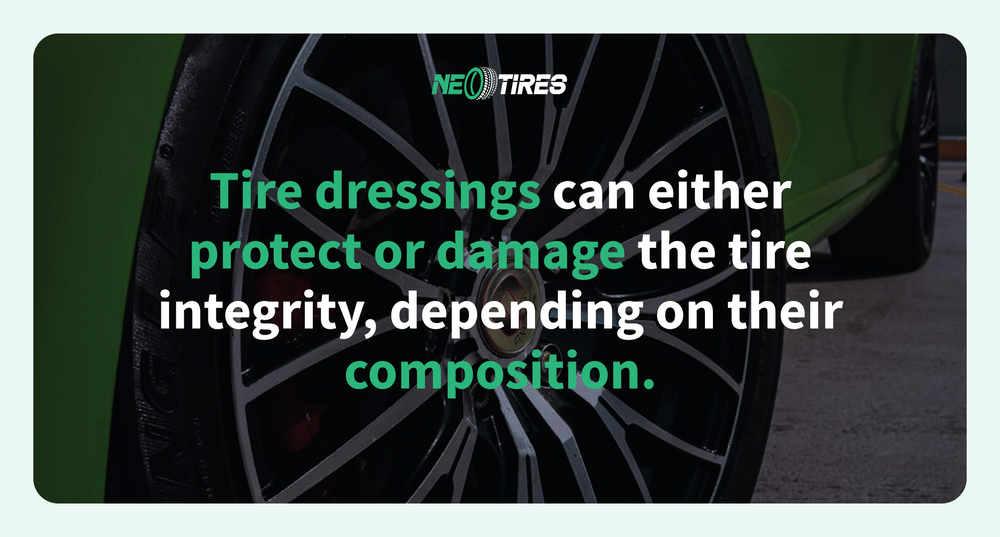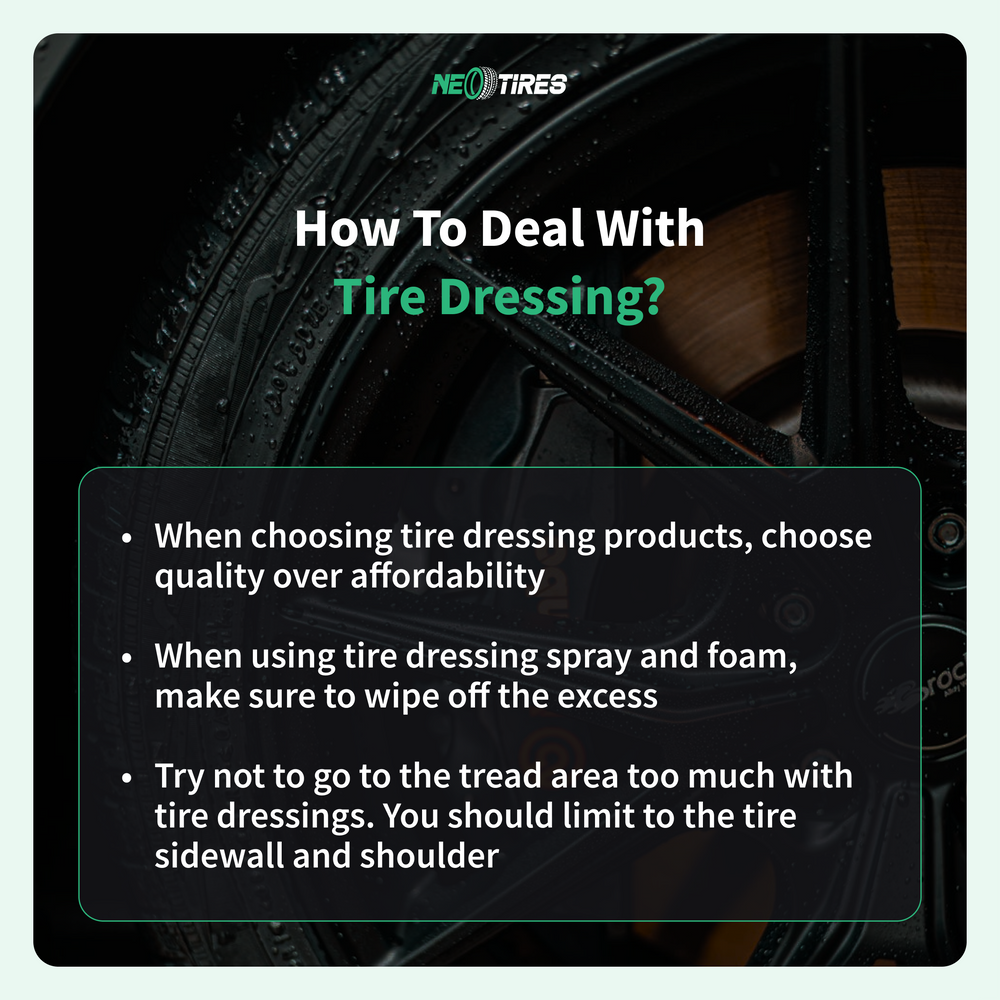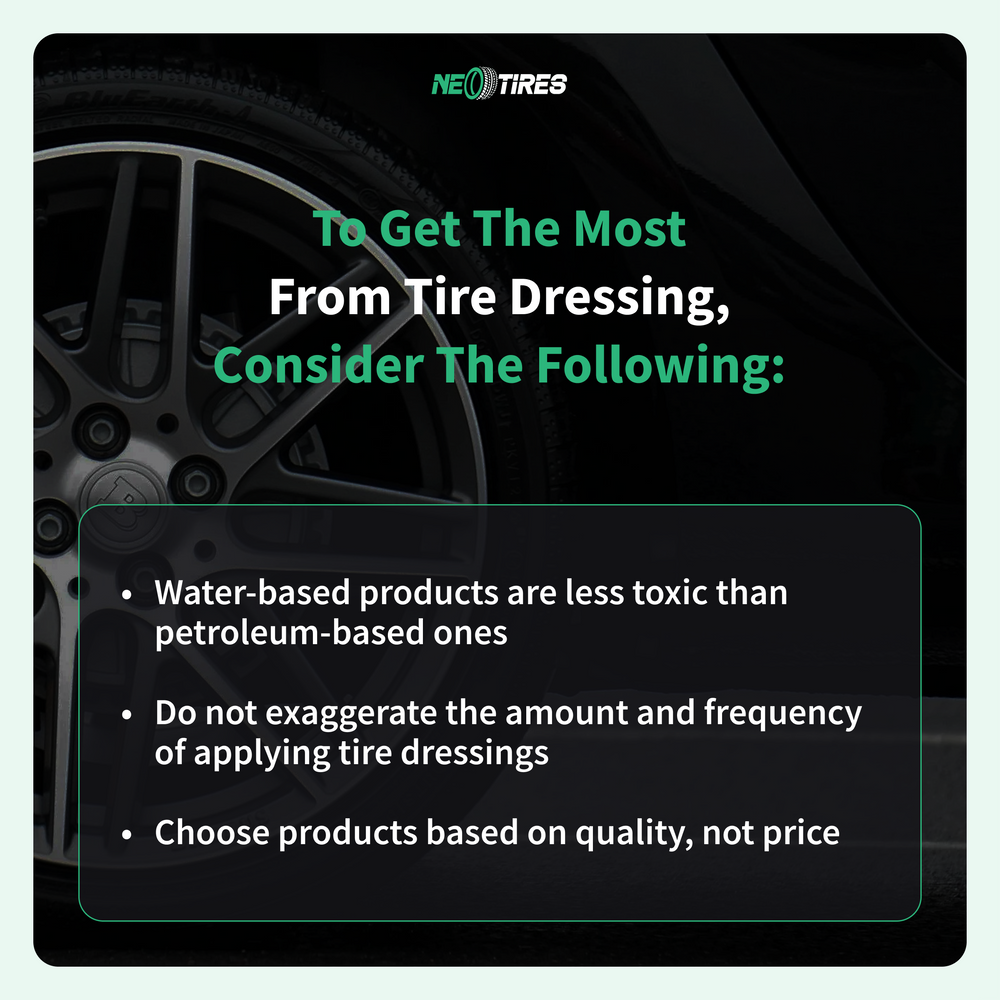Cleaning and maintaining the tires' appearance is not only about aesthetics; it's also about regular vehicle care. Tiree shine and dressing is a common practice in this process, offering tires a brand-new and fresh look. Yet, there are several concerns about tire dressing safety like its chemical impact on tires, potential disadvantages, and which products are the best to reduce those disadvantages. This section explores tire dressing facts, an overview of its composition, pros and cons, and the best way to use tire dressing to shed some light on the topic.
Is Tire Dressing Good For Your Tires?
Yes, tire dressing can offer benefits like UV protection, protection against cracks due to aging, dirt/water repelling, and dry rot prevention when used correctly with the right products. It's important to choose good-quality tire-dressing products to maintain tire health; low-quality products can degrade the rubber and speed up the tire aging process due to harsh chemicals in their composition.
What Is Tire Dressing Made Of?
There are two main categories of tire dressings based on their main ingredients:
- Water-based tire dressing
- Solvent-based tire dressing
Water-based tire dressing is more environmentally friendly, including mostly natural oil and polymers. Water-based dressing solutions provide a matte or satin finish and are optimal for regular use with no likelihood of damaging tires.
Solvent-based tire dressings include silicone and other petroleum-based compounds. Solvent-based dressing solutions are usually harsher on rubber, degrading it with prolonged use, even despite their more intense glossy finish.
Tire Dressing Pros & Cons
Tire dressing provides the following benefits: a cleaner and shinier look, UV protection, water and dirt repelling, dry rot, and crack prevention. Disadvantages of tire dressing, especially the solvent-based and poor-quality ones, include rubber drying out with frequent use, slippery residue, high price for high-quality products, and possible environmental damage.
| Tire Dressing Pros | Tire Dressing Cons | ||
| Enhanced appearance | Gives tires a sleek, polished look | Potential damage | Solvent-based dressings can dry out the rubber over time |
| UV protection | Protects tires from UV rays, reducing the risk of cracking | Slippery residue | Overuse or poor-quality products may leave a slippery film, compromising traction |
| Dirt and water resistance | Helps maintain cleaner tires for a longer period | Cost | High-quality products can be expensive |
| Hydrophobic properties | Water-based products can repel moisture effectively | Environmental impact | Some solvent-based dressings can be harmful chemicals to the environment |
Tire Dressing Advantages and Disadvantages
How Often Should Tire Dressing Be Applied?
Apply water-based tire dressing every 1-2 weeks, especially in harsh weather conditions or with every car wash. Use solvent-based dressings every 3-4 weeks as their effect typically lasts longer. Follow the manufacturer's recommendations for best results to avoid overuse.
How To Use Tire Dressing?
To optimize the advantages of tire dressing and reduce risks, consider the following steps: clean your tires any dirt and residue; dry the tires before applying the dressing to prevent streaks; opt for foam applicators or spray-on solutions on microfiber to evenly spread the product, apply the dressing only on the tire sidewall and shoulder area avoiding the tire tread and brake rotor areas; and let the solution dry to ensure bonds properly.
To maximize the tire dressing benefits, NeoTires recommends being prudent about aerosol tire dressings due to their alcohol-based composition. Alcohol is likely to dry out the rubber instead of hydrating it.
Is Tire Dressing Worth It?
Tire dressing or tire shine is worth it if the driver prioritizes vehicle maintenance and look, UV tire protection, and overall tire care. Opting for water-based and high-quality tire dressing formulas is a great choice for the goal.
The Rubber Manufacturers Association encourages proper tire maintenance including the use of protective products. Trustful tire manufacturers like Goodyear, Michelin, and Continental often emphasize the importance of tire UV protection. This makes the use of water-based tire dressing products valuable.
Tire Dressing: FAQs
What Is Tire Dressing?
Tire dressing, or tire shine refers to products that make the tire sidewall look fresh and shiny. These are usually applied after washing the tire and contribute to rubber temporary hydration.
What Is The Best Dressing For Tires?
Water-based tire dressing products are the most recommended due to their friendly composition and low impact on tire structure. Gel, spray-on, and foaming water-based formulas will totally do to protect tires from UV rays and ensure proper tire care. Aerosols are less recommended as they can reach brake rotors with subsequent brake damage with incorrect application.
Does Tire Dressing Damage Tires?
Yes, tire dressing can damage tires by drying the sidewall out, speeding up the aging process, and generating cracks if using petroleum-based products excessively. To reduce potential damage, opt for water-based formulas, apply them on the tire sidewall and shoulder only, and opt for high-quality products.
Why Trust Us?
The NeoTires team involves specialists with extensive experience in the automotive industry. This helps us better understand the influencing factors on tires and what makes them perform better or worse in various conditions. Therefore, we are here to provide the best solutions for any driver's needs.
NeoTires can professionally help you match the best tires with your unique needs, driving style, and performance expectations. Our trained assistants are happy to guide you in any tire-related matter, regardless of whether it is about maintenance tips or recommendations regarding the most suitable products for you. Drive safe and choose your tires wisely!








